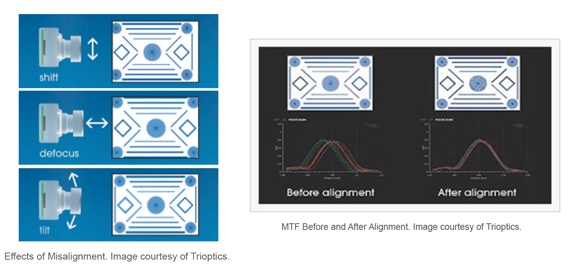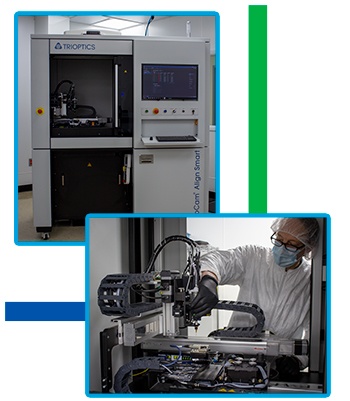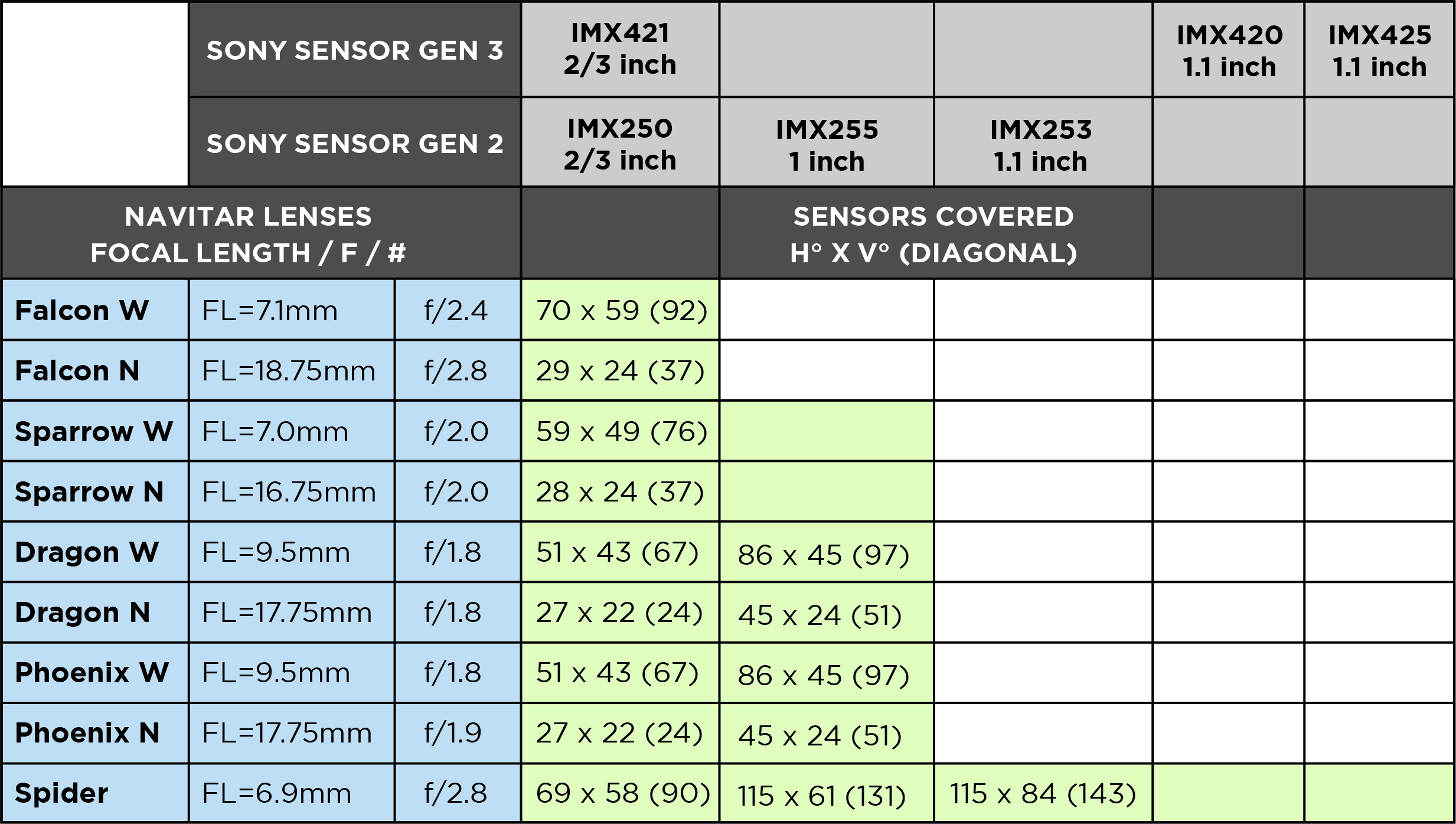Lens-Sensor Active Alignment
Active alignment of a lens and sensor enables accurate, cost-effective production of high resolution, precision camera modules. The alignment process ensures the full capability of the lens and sensor are carried over to the completed module.
Smaller pixels and larger sensors are driving the need for fast, high resolution lenses. Meeting these high quality demands, yet maintaining a manufacturable lens at a reasonable cost, has forced engineers to employ a variety of techniques to deal with tolerance concerns during lens design. Many times, these manufacturing techniques result in positional accuracies in the single-digit µm range.
Often times, manually attaching a high quality lens to a high quality camera, results in a poor to mediocre image due to standard, mechanical attachments such as c-mount or f-mount. The tolerances used for the manufacture of standard mounts, though acceptable for standard imaging, are far too lenient for high resolution applications.
Benefits of Active Sensor Alignment
This is where active alignment comes into the picture. The lens and sensor are aligned while projecting multiple targets through the lens and onto the sensor while the sensor is imaging. The active alignment machine continually monitors the MTF at each of the target images until all MTF values are within acceptable limits.
When all MTF values are acceptable, preapplied adhesive is partially cured using UV, with complete thermal cure performed later. This allows the sensor to be aligned, within micrometers, to the appropriate lens image plane.

Precision Camera Module Production
Navitar 4K HDR lenses offer simple operation, little-to-no focus loss over large temperature ranges, outstanding color correction, and low lens-to-lens variation.
Combining HDR lenses with Pixelink camera sensors allows simple image acquisition (via USB 3.0, GigE, Firewire, etc.) and flexible image processing options to suit your individual application.
Choose from off-the-shelf Navitar 4K HDR lenses and Pixelink camera boards from 2/3” up to 1.1” sensor formats or tailor one of our existing designs to fit your specifications with no time lost during the design process.
Navitar camera modules are used in the automotive, virtual reality, augmented reality, drone, surveillance and agricultural industries.

Navitar 4K HDR Lens and Pixelink Cameras with Sony IMX Sensors

Tailoring to Your Specs
Of course, every application is unique and may require a customized lens and/or camera. Navitar can easily tailor one of our existing designs to fit your specifications with no time lost during the design process.
Contact us at 585-359-4000 to discuss active lens-sensor alignment services available to OEM customers.